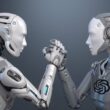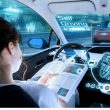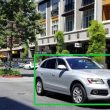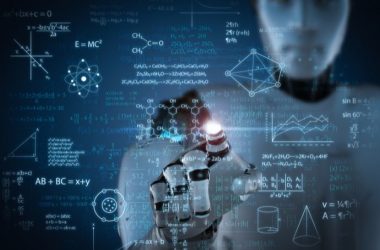Executive Summary:
Mozziyar Etemadi was ecstatic when the computer correctly detected tumors in patient scans compared to expert radiologists after years of assistance training an artificial intelligence (AI) system to see the early stages of lung cancer. When his team uploaded old computed tomography (CT) scans of the chests of individuals who later acquired lung cancer, he became even more enthusiastic. The doctor hadn’t noticed anything unusual in these early scans, but the machine did. This article will demonstrate how artificial intelligence enhances lung cancer detection.
Introduction:
Although lung cancer is the scariest cancer in the world, two-thirds of patients diagnosed early go on to live for at least five years. To find ever-tinier lung tumors, AI algorithms are being created. These innovations promise to improve the accuracy and accessibility of lung cancer screening. However, it will take careful development of the relationship between radiologists and the tools they rely on for their work to make the new technologies clinical staples.
How artificial intelligence is assisting in the early and more effective detection of lung cancer
See how artificial intelligence enables earlier and more precise lung cancer detection by reading down to learn more.
- Spot the lung cancer accurately.
In at-risk groups, routine screening can find many earlier lung cancer cases, cutting mortality by 20–30%. However, the number of radiologists who review lung scans has not grown quickly enough to meet the demand, which causes overworked radiologists to make errors and miss minute malignant tumors. By taking part of the load off of busy professionals and spotting lung spots that are unseen to the unaided eye, AI technologies can help radiologists perform their jobs more efficiently.
Deep-learning algorithms are more accurate than older, non-AI systems at differentiating lung tumors from benign blotches because they use a vast data set to learn what a lung cancer nodule looks like. Additionally, they provide doctors with an estimation of their confidence level in their judgment, which can aid in therapeutic decision-making.
- Getting deeper and deeper
Compared to a panel of six experienced radiologists, Etemadi’s approach correctly detected the early stages of lung cancer 94% of the time. Analyzing a full 3D CT scan increases the system’s accuracy. It can make more accurate diagnoses concerning features like blood arteries that are not a part of the primary tumor. Another deep-learning AI model that is as adept at identifying nodules that are signs of early lung cancer has been created by Bagci and his team. Approximately 95% of the time, Bagci and Etemadi’s methods accurately recognized minute cancerous specks on CT scans; this significantly improved over the 65% accuracy rate that radiologists generally attain. They developed their technique using CT scans of tumors 1-3 millimeters in size, which are challenging for many radiologists to detect.
By using “AI In the detection of lung cancer” early by recurrence following first therapy, the method developed by Jamal-Hanjani at University College London and the Institute for Cancer Research in London can find indicators that aid in their early diagnosis. For radiologists, these signals make identifying patients who need close monitoring simpler.
- Gradual development
Because it is challenging to integrate AI into radiologists’ workflow, Etemadi envisions a gradual increase in the automation of lung cancer diagnosis. Existing computer-aided diagnosis systems can incorporate deep learning capabilities, but privacy must always come first. Several privacy safeguards are already in place at Google and several AI research universities, including deleting names from lung-scan data and hiding the date each scan was performed. Lung cancer specialists who use the new tools will not want to use the old ones again if developers can successfully handle the human concerns that come with outsourcing some precise work to AI systems. Given that lung cancer patients typically pass away, this will lead to better long-term outcomes.
Computer Vision for Medical and Healthcare Imaging Solutions
- Widescreen
The development of population screening, which aims to detect lung cancer considerably earlier, can be sped up by deep-learning algorithms. According to a screening program experiment conducted in Belgium and the Netherlands, people who underwent frequent screening were 25% less likely to die of lung cancer than those who had not. A countrywide AI In the detection of lung cancer screening program for people at high risk would cost nearly $19,000 for every life year that may be spared, according to a US actuarial estimate. In addition, AI-assisted screening may recognize those with lung cancer in its early stages and those with a high risk of having it in the future. Shortly, radiologists can tailor treatment strategies by fusing screening results with genetic information.
Conclusion:
Recent research has demonstrated that AI performance is approaching or has already surpassed that of radiologists for some activities required for the present reporting systems used in lung screening. For example, in their current condition, AI systems can assist radiologists decipher CT scans used for lung cancer screening. However, future research must address unique reading paradigms and concentrate on large-scale validation of novel deep learning-based algorithms.
The cost-effectiveness of screening may be significantly impacted if trained readers assisted by AI HealthCare Solutions algorithms may be employed for triaging regular scans. If fully autonomous algorithms were permitted to undertake triage by choosing possibly abnormal CT scans to be sent for evaluation by radiologists, the impact of this would be more significant. However, the prerequisites for deploying autonomous algorithms should be more stringent than when there is still a trained reader in the loop to ensure their use is safe and responsible.










